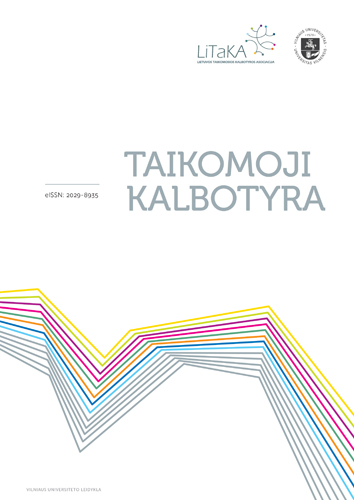„O kodėl Jūs mane pertraukinėjate?“ Persidengimų bei pertraukimų kaita pokalbių laidose 1960–2011 metais
“Why are you interrupting me?” Change of overlaps and interruptions in talk programmes 1960–2011
Author(s): Laima NevinskaitėSubject(s): Communication studies, Sociolinguistics
Published by: Vilniaus Universiteto Leidykla
Keywords: overlaps; interruptions; conversationalization; talk programmes; radio; television;
Summary/Abstract: The article deals with one of the features of media discourse connected to conversationalization—speaking at the same time, i.e. speech overlaps and interruptions. The article focuses on overlaps and interruptions in talk programmes in Lithuanian radio and television in 1960–2011. Theoretically, overlaps are treated as an objective (audible) category, while interruptions are regarded as an interpretative category that can be analysed in terms of the talk sequence analysis or from the perspective of participants on the basis of their comments on interruptions (metadiscourse). In the empirical part of the article, the data of radio and television corpus were used to compare the change of overlaps and interruptions over three periods (Soviet, transitional and present-day). The quantitative analysis has shown that the number of overlaps increased considerably with every new period. The analysis also reveals an increased variety of situations where overlaps and interruptions occur. In the Soviet period overlaps and interruptions were associated with neutral and collaborative functions; in the transitional period they started to be used as turn-competitive device; in the present-day period, overlaps and interruptions are strongly competition- and power-oriented and also reflect the commercial nature of the media (entertainment function, interruptions for commercial breaks). These trends are also reflected in metadiscourse. In the present-day period there are relatively fewer apologies for interruptions but more verbal defence of one’s right to speak. This means that the competition for turn and the right to interrupt is taken as a norm. The identified changes should be interpreted not as a shift, but as an increase of variety, since in later periods programmes with many overlaps and new functions of overlaps and interruptions appear as an additional feature, without making the earlier types of programmes and functions of overlaps and interruptions disappear.The change of overlaps and interruptions can be associated with more general changes in media discourse, e.g. increased dialogicality. These changes were brought about by political changes in the public sphere, and changes in radio and television (shift to the commercial model of broadcasting). In the late present-day period changes must be also influenced by global (Western) trends of media development.
Journal: Taikomoji kalbotyra
- Issue Year: 2016
- Issue No: 8
- Page Range: 265-291
- Page Count: 27
- Language: Lithuanian

